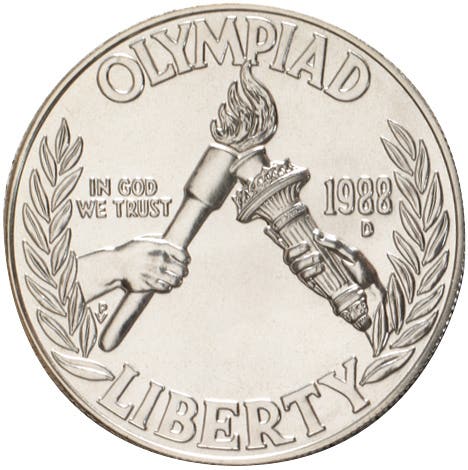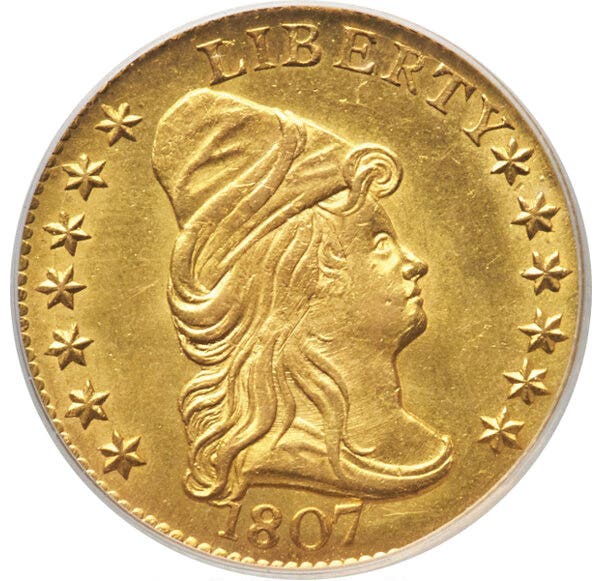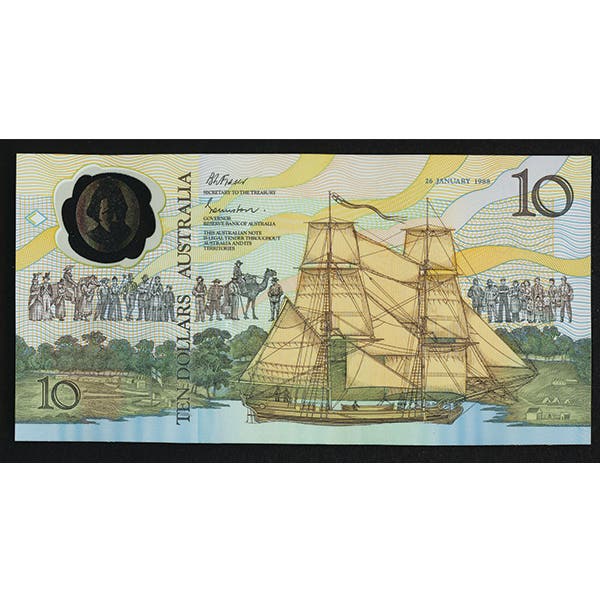This week’s letters (01/31/12)
Neal Wolin, in order to cut waste, is going to create waste, a lot more waste. Ironic that the dollar bill costs $1 in borrowing a $1 in the form of a bond, interest on that bond, and the cost of making that bill.
Keeping dollar bills, not coins a waste of tax dollars
Neal Wolin, in order to cut waste, is going to create waste, a lot more waste. Ironic that the dollar bill costs $1 in borrowing a $1 in the form of a bond, interest on that bond, and the cost of making that bill. Let’s say it amounts to about $1.05, combined cost. The dollar coin costs the are that of manufacture of that coin, I guess around $0.18 to $0.25. No bond is needed for coins since they are not backed by debt, and also, there is no interest. They last longer too.
When a coin enters circulation, it is worth face amount, in this case a $1. It’s better to make $0.75 than spend $1.05. Stop printing paper bills. No more storage. People will accept the coins, which are far more hygienic than germ-infested paper money. Stop wasting my tax dollars, Neal Wolin.
Andrew Suchan
Parma, Ohio
New ANA technology adviser looking for input
I have the privilege of chairing a new committee for the American Numismatic Association to advise on the use of technology by the ANA. That’s a very broad topic, and one I hope to connect with many people for their feedback and review.
I could go on for hours with all the opportunities the ANA has through better use of technology to better serve numismatics and the ANA membership. For now, I need to focus on pulling a committee together, gathering input, and producing something worthy of review by everyone.
At this stage, I’m especially looking for ANA members who might wish to be involved to contact me. I welcome feedback from non-ANA members as well, of course.
I am an ANA member, coin collector and active in Pacific Northwest numismatics in multiple ways including being a board member of the PNNA. I especially focus energy on youth programs including Scouting workshops (merit badges for Boy Scouts, Fun-with-Money for Girl Scouts). Professionally, I am an Intel employee of some 23 years, which has helped cultivate some knowledge in computers.
I can be contacted at TechChair2012news@collect3.com to discuss this further.
After we have some work under our belt, I would welcome the opportunity to offer anything we do or create in terms of a vision to the readers should their be interest.
James Reinders
Portland, Ore.
Some Eagle set complaints show a lack of dedication
I must say, I’m finding it hard to believe some of the complaints I’ve been reading regarding failed attempts to purchase a 25th Eagle anniversary set. I feel a lot of these complaints are from people who didn’t take it as seriously as they should have, or as seriously as I did. I started at 12:20 p.m. I didn’t get on the site for another half hour, and my first order of two sets wasn’t placed until 1:45 p.m.
After sitting at my computer finally able to let my shoulders down, I realized I’d better order another one. So at 2:15, I began the whole ordeal over again. The same problems as before kept me pulling my hair out until 3:35 p.m., when my second order went through. Once again, I sat and pondered and then began another non-stop reload, page back, page forward attempt and I scored my third order at 4:10 p.m. I was able to place three orders, with short breaks in between, for a total of four sets.
This leads me to believe people weren’t as dedicated as they should have been. I understand the supply versus demand.
But I can’t help feeling that some of these negative complaints are because they didn’t try hard enough. That’s really why some are outraged. They’re mad at themselves for not fully applying themselves. Was it fair we had to stick to our computers for hours to get a set? No. But the people who really wanted one did.
I’m very sorry for the people who got robbed of their order because of the Mint’s screwed up system. I’m even more sorry for the run-around it gave to unsuspecting customers filled with hope. The process used right now, is so messed up. The U.S. Mint uses stall tactics. It swears that a representative will call you back and be able to handle your problem. But a call never comes, you get transferred from representative to representative, each time making you tell your story until you give up and hang up or filling you with false hope someone will call you back.
Anthony Massey
Address withheld
Doctoring definition ignores pivotal part of act
Gregory Kipp writes in the Dec. 27 “Viewpoint” that the “removal of corrosion is also removal of some of the original material and therefore, is also coin doctoring.”
Not so. He forgets that doctoring involves “malicious intent to defraud.” Conservation therefore is not fraud, as it is declared. It wouldn’t be conservation if you didn’t say you had done it.
P.M. deLaubenfels
Corvallis, Ore.
Dec. 27 explanation of holed coins seems unlikely
In Alan Herbert’s Dec. 27 “Coin Clinic” column, he gave a reply to a question about holed early dollars, saying that one explanation was that the coins were used as teethers. While that is certainly possible (although all explanations are merely conjecture), I don’t believe it explains the large number of holed coins found today.
First, as Herbert mentions, a dollar was a lot of money in the early 19th century, often a day’s wage for unskilled labor (and hence our saying of “another day, another dollar”). Some rich people may have used dollar coins for this purpose, but another explanation seems much more likely to me.
The use of banks was not at all widespread in those times, and the average person kept coins hidden at home. If a man needed to travel from one area to another, he would need to carry his money with him – no credit cards or ATMs back then.Travel was often a dangerous activity, with many an unscrupulous opportunist waiting to relieve a traveler of his cash along the way.
One common way to deal with such thieves was to sew money into the lining of clothing, typically a coat heavy enough to mask the additional weight of coins. The easy way would be merely to open the lining and sew all the coins inside, but this would allow the coins to jingle when they bumped together, which might give away their hiding spot.
Therefore, people would drill holes in their coins and sew them individually into the lining. This was easily accomplished with a few quick stitches. The traveler could cut out the coins as he needed them along his journey.
This also could explain why such drilled coins continued to circulate with no apparent problem, despite the loss of metal. Because the holes were so useful to so many, such coins may actually have been preferred in some cases. To me, this explanation is far more likely to account for the large number of holed coins, dollars or otherwise, that we come across today.
James Sparks
San Francisco, Calif.
Battle of New Orleans should also be honored
One of my very favorite singers when I was 10 years old was Johnny Horton. He was a historical balladeer singing wonderful songs about famous events like “The Battle of New Orleans,” “North to Alaska” about the Alaskan gold rush, and “Sink the Bismarck” about World War II.
As a child of 10, I became acquainted with history I never knew before. Too bad Johnny Horton didn’t live long enough to record even more historical songs since these are the only three I remember and they are popular even now on oldies stations.
Why can’t we recreate the excitement of Johnny Horton with the commemoration of the 200th anniversary of the War of 1812? “The Star Spangled Banner,” a famous song about the Battle of Fort McHenry, is to appear on a coin. But not a word was mentioned about the Battle of New Orleans, which was the decisive battle of the War of 1812, and rocketed Andrew Jackson to fame, leading him to the presidency.
The designs on our paper money are stodgy and lackluster. Let’s add some excitement to the $20 bill with a lovely panorama of the Battle of New Orleans as a grand finale to the bicentennial celebration of the War of 1812. Like the battle and Jackson himself, this is sure to be a winner for all involved.
We could educate our young ones about the battle the way Johnny Horton did for me. After 50 years, I have never forgotten our wonderful history.
Bob Olekson
Parma, Ohio
Where can dollar coins be bought after suspension?
Now that the Mint is suspending issuance of the Presidential dollar coins and just making them available to collectors, how is this going to be done?
My bank has been great for issuing these. I have been buying four $25 rolls and would like to continue doing so. However, if I have to go through the coin vault or dealers only, I don’t think I could buy the rolls at their inflated prices.
Do you have any information on how we collectors will continue to have resources for purchasing the dollars? Banks? TV coin shops? Dealers?
I also used to purchase about $10 worth of dollar coins to fill a couple of books and to use them for tips, etc. I have yet to have any waitress or waiter complain for receiving them for tips. In fact, they’ve said things like, “Neat!” “Wow!” “Thanks!” I’ve never had anyone ask that I keep them and pay with bills.
That’s just me. Any information you may have will be appreciated.
Ken Kassen
Shawnee, Kan.
Editor’s note: The Mint has not released details for this year’s dollar program but it is expected to continue to sell rolls and bags directly to collectors. The end of routine release of the Presidential dollars unfortunately removes the option of obtaining them for face value. The dollars will also be available in the annual proof and mint sets and various dollar sets.
Item shown on Jan. 7 HSN elicits confusion, questions
I taped the Coin Collector show Saturday, Jan. 7, at 7 p.m. I watched it this afternoon.
Mike, the coin host for Home Shopping Network, was selling item No. 169403, a labeled certified ANACS 2012-S silver American Eagle MS-70 FDOI-LE from the San Francisco Mint, #0006 of 4,568.
To my amazement, the $1 silver Eagle inside the holder was a 2011. I paused the program and zoomed in to be sure. How can this be, if this coin was truly certified? Especially with the FODI numbers above.
My question is: Does the public deserve an explanation on how and why this coin got into this certified holder?
Name and address withheld
Editor’s note: It is a prop that is not intended to be sold. It represents coins that will be slabbed. The Mint began shipping the coins to buyers Jan. 6.
Potter’s three-part series answers many questions
With your three-part series by Ken Potter on the subject of errors – all three groups including the striking error aspect in which I was interested – my question has been answered.
I’m sure that I am not the only one that will need to read, re-read, and study this series by the premier expert in order to try to get an understanding of the subject.
Kudos to you on a very fine and informative coin hobby paper.
Jerrold Finch
Bluffton, S.C.
Mint items reflect hobby’s decline into ‘money game’
I agree with the Jan. 24 “Viewpoint” article written by Mike Davis about a once fun hobby now a money game. I will buy nothing from the US Mint. In 2009, I purchased two clad proof sets for $32 each.
Now a few years later, I can’t even sell one unless I take about $15 for it. I wished I would have spent my money on an uncirculated Morgan silver dollar. At least that would not have lost 50 percent of its value in just two years.
Bob Hefner
Moorefield, W.V.
Jan. 10 ‘Viewpoint’ does not define critter coins
I read the “Viewpoint” article, “Six factors may explain price jumps,” in the Jan 10 issue and the writer, David Chiszar, referred to “critter coins” several times, but never defined them...could you tell me what they are?
Rick Parfitt
Florida
Editor’s note: Critter coins are coins with animals on them.
Recent find reports spur reader on to his own finds
As someone who gets a few rolls of cents and nickels to search, the recent circulation finds inspired me to ask for a few rolls today. I got two rolls each.
The first roll of nickels had four dark coins. While three of them were from the 1990s, the other was a 1942-P. The next roll had a 1954-S, 1955-D and an almost uncirculated 1940-D. Not too bad for 80 coins. The cent rolls didn’t have a wheatie but did have 14 from the early ‘60s.
I think I’ll grab a few more rolls next week.
Roger Scires
Camden, S.C.
Debate on cleaning coins is full, well-traveled topic
I thought that cleaning coins went out with the ‘50s and ‘60s. How many of us have cleaned a coin in our youth, and later realized that we most likely goofed it up to the point where it is worth much less, like common silver coins that tarnish because you’ve taken off the original layer: the dirt.
I myself have cleaned some average Franklins, Washingtons, etc., only to find them tarnished later, and wondered why I did it in the first place. They looked shiny at one time, and were even in my book. But, that was then, this is now. Those have all been replaced with something that is not tarnished, but is nice and retains that original patina. Remember, this is common stuff, not the high dollar items that can afford to be conserved.
I’ve always thought that cleaning should be a dirty word, unless it’s items that you have found with your metal detector. I recently experienced a refusal by a bank to accept my “dirty” pennies.
I thought that they were supposed to accept these and then turn them in, like with worn-out paper money.
I’ve been a long time subscriber (since 1985) and seen this topic come up periodically. Long term collectors seem to know what the novices have yet to learn.
Keep up the great work,
Doug Zieher
Pittsville, Wisconsin
NN wins out as reader’s favorite hobby publication
I recently renewed my subscription for three years. I look forward to every edition, more than any other publication. Thank you for all the hours of enjoyment that you have provided me.
You are the best editor in the history of the publication.
Bruce R Frohman
Modesto, Calif.









